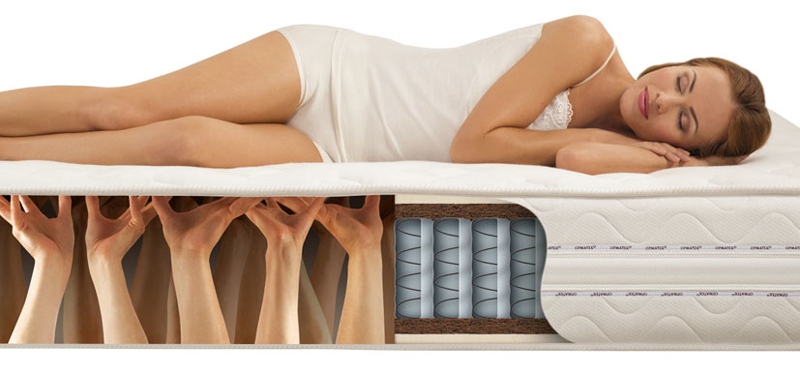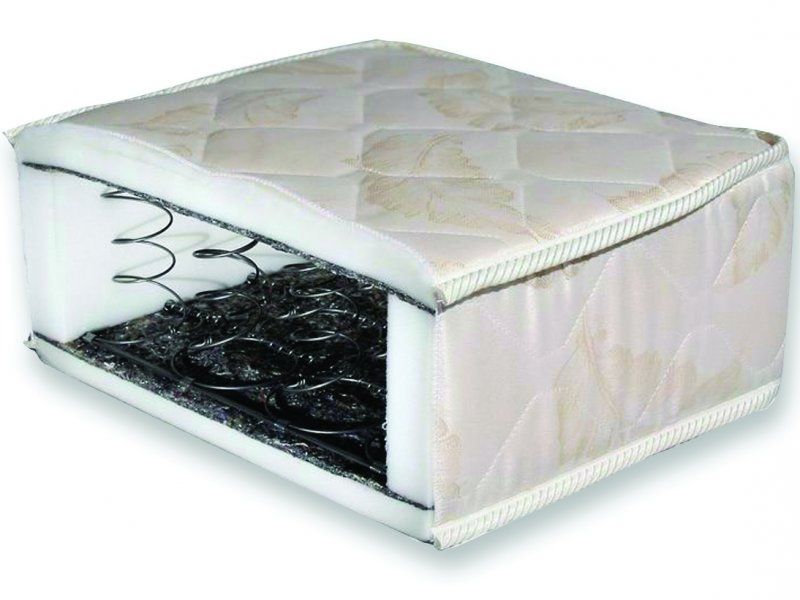The end of autumn is a traditional period of sales and discounts on mattresses, when they can be purchased much cheaper than during the summer peak of sales. In today’s article we will try to consider all types of mattresses, and most importantly we will try to determine the basic rules that should be followed when choosing the perfect mattress.

How to choose a mattress: helpful tips
All mattresses can be divided into several groups: orthopedic (spring and non-spring) and anatomical (which follow the contours of the human body, for example, gel). There are, of course, more exotic mattress types – inflatable or water. However, inflatable mattresses are suitable only for spending the night for unexpected guests, and water mattresses are too difficult to use, so they are not a common type in our country. It is impossible to say unequivocally which type of mattress – a spring or springless mattress is better, and both have their advantages and disadvantages. A hard mattress will put pressure on the spine, and a soft mattress will not be able to keep it level, so it is important to choose a middle ground for yourself.

How to choose a mattress: helpful tips
Let’s get acquainted with the most popular models that can now be found on sale, as well as their pros and cons:
1. Spring mattresses
A spring mattress itself consists of a spring block and interlayers that separate the user’s body from the springs. Spring blocks are dependent and independent. For independent pocket springs, cylindrical springs are used, each of which is inserted into a special bag (pocket). Dependent spring blocks are made on the basis of one-piece spring block.

How to choose a mattress: helpful tips
Advantages: The main advantages relate to spring mattresses with an independent spring block. The use of more springs improves the point elasticity, one of the main characteristics of the mattress. It should be clarified that point elasticity is understood as the property of the mattress to adhere to the body and bend in places of point load.

How to choose a mattress: helpful tips
Disadvantages: The dependent spring block consists of interconnected springs, thereby providing a minimal anatomical effect. Mostly mattresses with dependent spring blocks can withstand a load on one berth on average no more than 100 kg, and are not suitable for everyone.

How to choose a mattress: helpful tips
2. Springless mattresses
Springless orthopedic mattresses can consist of a monolithic block of various fillers, or of alternating their layers.
Advantages: These mattresses have excellent orthopedic properties, noiselessness and can withstand body weight up to 140 kg. Also, the springless mattress is not afraid of jumping and tumbling and they have a very long service life..
Disadvantages: High cost and such mattresses do not have the effect of rocking up and down after any movement.

How to choose a mattress: helpful tips
3. Water and air mattresses
These mattresses were originally developed for hospitals and hospitals. And to be honest, they have much more disadvantages than advantages. So they are not very suitable for the bedroom..
Advantages: It should be noted the very high orthopedic properties of these mattresses.
Disadvantages: Air mattresses have a high compressor noise level, while water mattresses have a large mass and a problem with changing water every two to three years.

How to choose a mattress: helpful tips
4. Latex mattresses
Latex mattresses have different hardness zones, and manufacturers also use different forms and combinations of latex with other materials. These can be mattresses of double-sided hardness and mattresses with a layer of horsehair.
Advantages: Latex’s resistance to environmental influences and durability make this material an ideal filling material for mattresses. It should also be said about the very high orthopedic qualities of these mattresses..
Disadvantages: The main disadvantage of this mattress is its high price. Artificial latex (foam rubber) mattresses are more affordable, but they do not have all the advantages of a natural material.

How to choose a mattress: helpful tips
Tips for choosing a mattress:
The first step is to pay attention to the firmness of the mattress..
So, hard mattresses are recommended, first of all, for children and young people under 25 years old and those who lead an active lifestyle, as well as citizens with diseases of the spine, whom doctors recommend exactly a hard surface for sleeping.
Soft mattresses ideally meet the needs of older people: such a mattress does not squeeze the body and does not interfere with free blood circulation.

How to choose a mattress: helpful tips
As a rule, in stores there are different copies of mattresses, try to lie on the one you like the most in the usual sleeping position for vases. Modesty is completely irrelevant here, the mattress is bought, as a rule, for at least 10-15 years, so you need to choose carefully.
Don’t skimp on quality, choose mattresses made from environmentally friendly materials.






